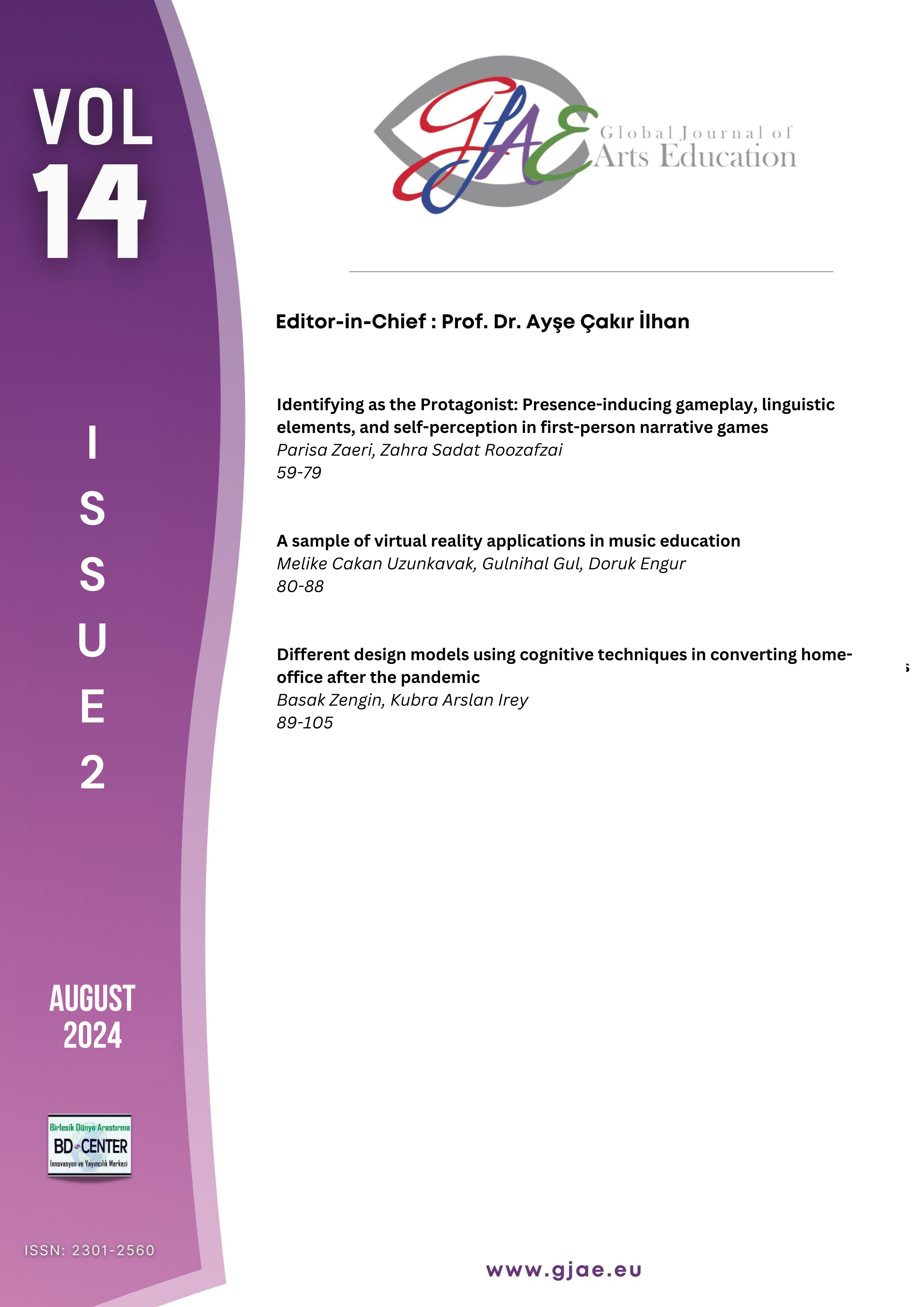A sample of virtual reality applications in music education
Main Article Content
Abstract
Virtual reality technology provides an opportunity for students to engage in a lasting, active, interactive, and enjoyable learning experience, particularly by embodying abstract concepts and utilizing multiple sensory organs. These applications can be utilized to create individual and unique educational environments for each student's specific interests, needs, and learning styles. In this context, it is believed that technological applications used in educational environments can also be useful within the scope of music education. This study aimed to determine the effect of these activities on the music performance anxiety levels and performance development of undergraduate students of the music department. A 10-week series of lessons has been designed utilizing virtual reality technology, the 'virtual stage' application, to reduce performance anxiety and enhance the performances of students in the field of vocational music education. The study group is determined by homogeneous sampling. A total of 26 students participated in the study. The quantitative data of the study were obtained with the Kenny Music Performance Anxiety Inventory and the performance observation form developed by the researcher; the qualitative data were obtained with the semi-structured interview form.
Keywords: Music Education, Virtual Reality, Instrument Training, Instructional Technologies.
Downloads
Article Details
Authors who publish with this journal agree to the following terms:
- Authors retain copyright and grant the journal right of first publication with the work simultaneously licensed under a Creative Commons Attribution License that allows others to share the work with an acknowledgement of the work's authorship and initial publication in this journal.
- Authors are able to enter into separate, additional contractual arrangements for the non-exclusive distribution of the journal's published version of the work (e.g., post it to an institutional repository or publish it in a book), with an acknowledgement of its initial publication in this journal.
- Authors are permitted and encouraged to post their work online (e.g., in institutional repositories or on their website) prior to and during the submission process, as it can lead to productive exchanges, as well as earlier and greater citation of published work (See The Effect of Open Access).

